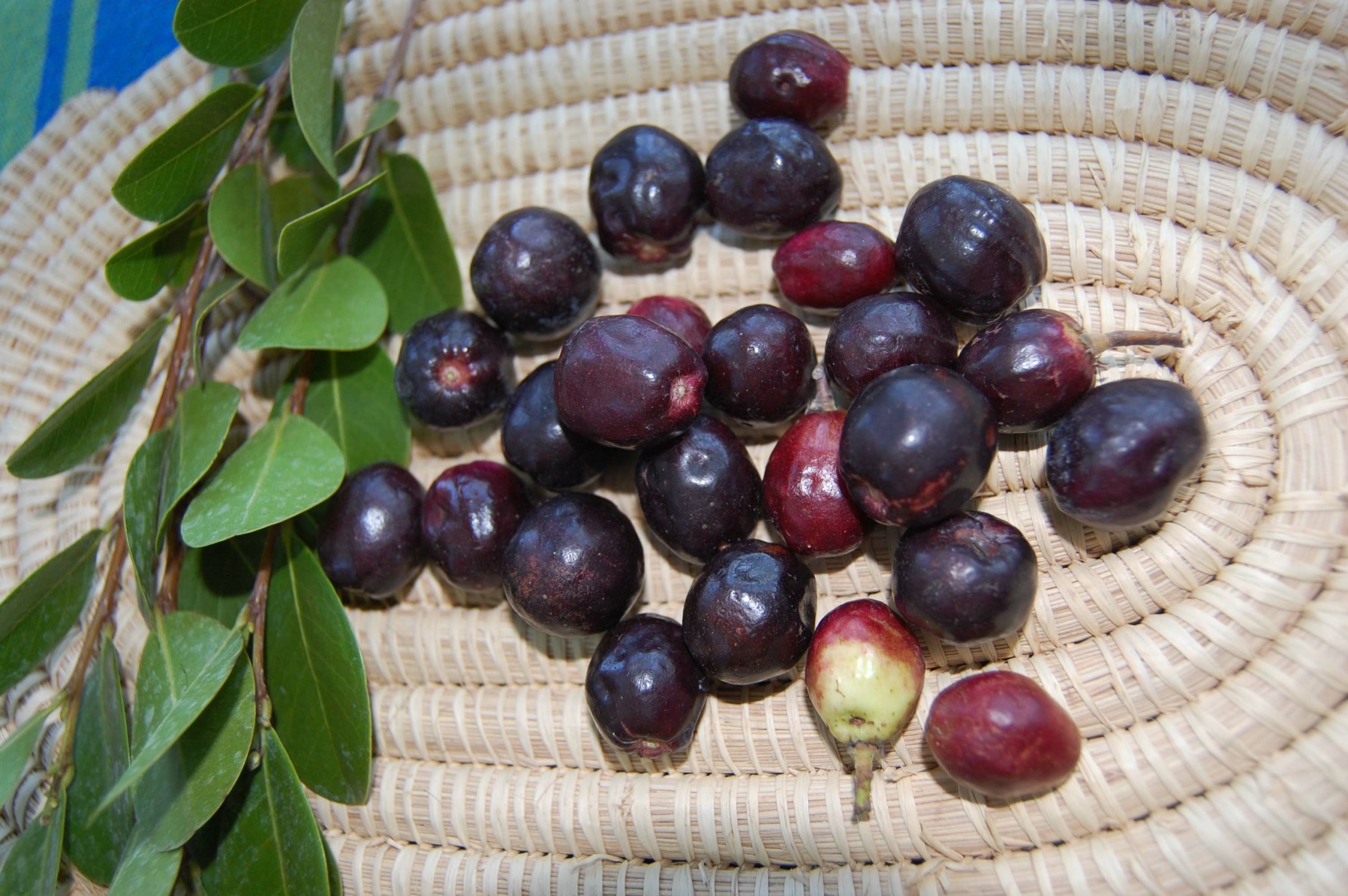Attractive Cocoplum Provides a Tasty Fruit
From the south part of Florida, cocoplum trees add to the color and attractiveness of our white sandy beaches and our beloved river of grass. Often used in urban landscaping, the cocoplum is pruned into a formal hedge, but I most enjoy seeing them in their ultimate expression of nature in the pine flatwoods of South Florida. The cocoplum (Chrysobalanus icaco) is found near sea beaches and inland throughout the tropical Amercas and the Caribbean, including Cuba, southern Florida, and the Bahamas. In Florida it is native to the pine flatwoods, the Everglades, cypress domes and hammocks, and of course it was very common to see them growing in coastal beaches and along the edges of freshwater canals.

Cocoplum, also known as icaco throughout much of its range, is a small tree which can grow to 20 feet tall. There are several cocoplum cultivars, but the most common are the coastal variety that is highly salt tolerant and has yellowish-green new growth and creamy white or purple fruits. There are other cocoplum types with light green to red new leaves. Actually, if one takes note of the hedges of cocoplums about town you can find colors from cream to pleasing peach and blood red.
Cocoplum Fruits and Seeds: Culinary Uses
The fruit is lightly sweet with a flesh consistency that always reminds me of cotton candy. Fruit was used by early inhabitants of peninsular Florida for jams and jellies. To have a pleasant experience eating the fruit, wait until they are fully mature, as immature fruits are astringent.
The seeds can be roasted and eaten for their almond-like flavor or crushed. Gopher tortoises and other wildlife love to eat the juicy fruit. In the old days in Jamaica, oil from the seeds was used to make candles, soap and grease. Black dye was made from the leaves, and provided decay-resistant properties to textiles and fishing nets. Seminole Indians also used their twigs to make arrows and the bark as a medicine. Caribbean countries use the bark and leaves as an astringent, to treat dysentery and diarrhea.
Cocoplum Fruiting Season
Coco plum flowers and fruits intermittently throughout the year depending on the variety, but fruit are particularly abundant during the summer. Growing naturally in Florida’s Everglades, fruit are easy to find during early October at the end of the rainy season. This is also the time to check for fruit around your local gas station cocoplum hedge, but be careful not to eat the fruit, as they may have pesticides applied.
Planting and Caring for Cocoplum
There are good cocoplum varieties available at local nurseries. Often trees are propagated from cuttings or air layer to guarantee plants that are true to type. Cocoplum can be grown in moderate to light shade or full sun. The tree is sensitive to hard frosts and should be protected on cold nights. Leaf damage occurs during temperatures of 32°F if frost should settle. Fabric coverage tends to confine cold damage to the tips of the plants. Recently installed plants are more susceptible to cold damage than older established plants.
In the first 3 years, trees are slow growing, after the plant reaches four or more feet, hand pruning can be done to shape the tree. Cocoplum’s nutritional requirement is low. However, young plants grow faster with regular fertilization, preferably in March, June and September. Cocoplum is attractive to both honeybees and native pollinators and furnishes food for wildlife.
Growing a cocoplum tree not only gives you the opportunity to pick a healthy, juicy snack right outside your door, but it can add a nice landscaping touch to the home garden.
This article was written by Noris Ledesma and originally published in the Miami Herald. Noris Ledesma is Curator of Tropical Fruit at Fairchild Tropical Botanic Garden. Minor changes from the print version of this article were introduced to improve readability in a digital format.
